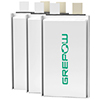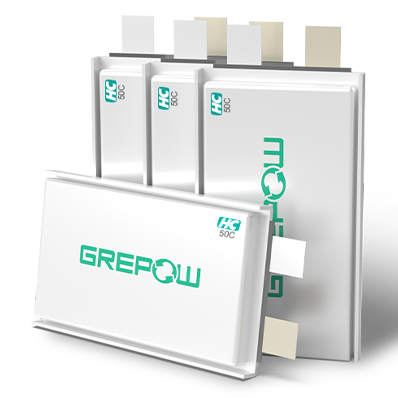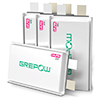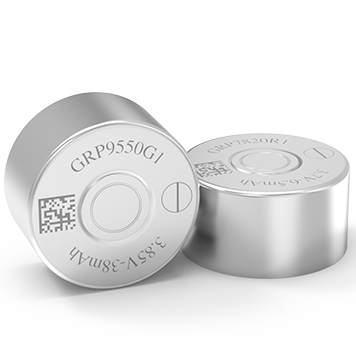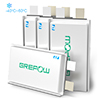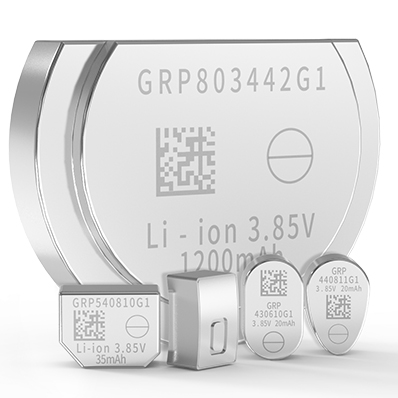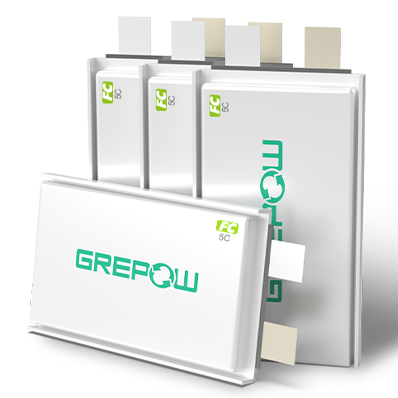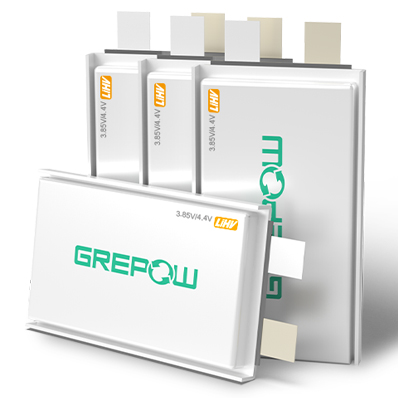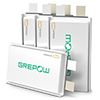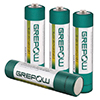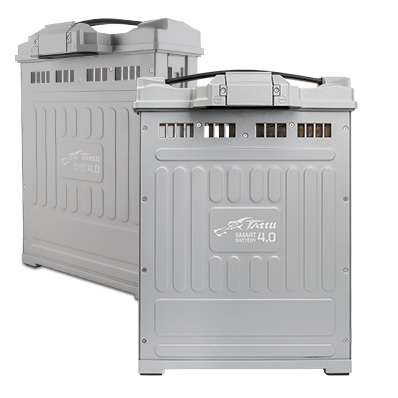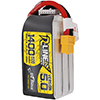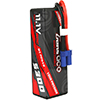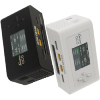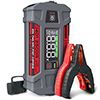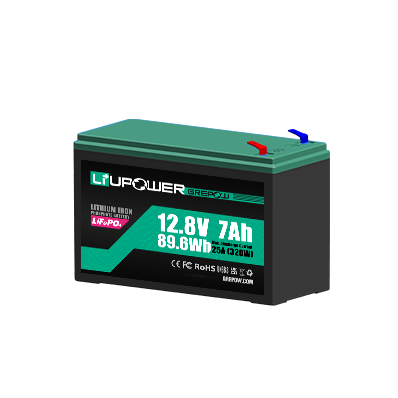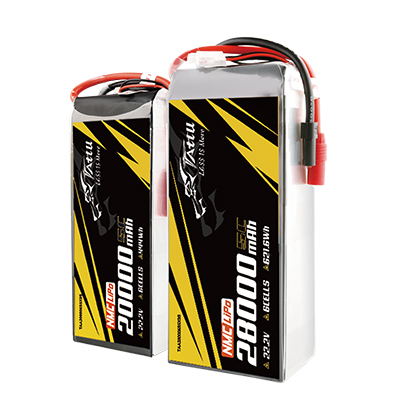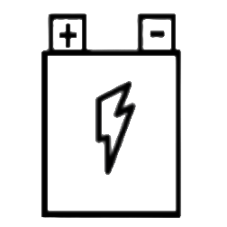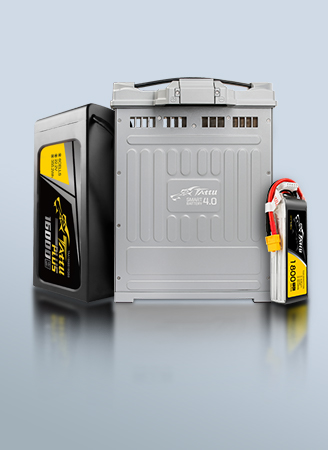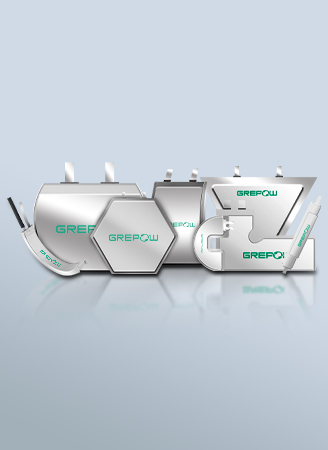Grepow Delivery Drone Power Solution: Powering the Future of Logistics
Grepow Delivery Drone Power Solution: Powering the Future of Logistics
The burgeoning delivery drone industry promises to revolutionize logistics, offering speed, efficiency, and accessibility previously unattainable. However, realizing this potential hinges on overcoming critical challenges, foremost among them being reliable and high-performance power solutions. We then introduce the Grepow Delivery Drone Power Solution, highlighting its innovative semi-solid batteries, intelligent charging, and comprehensive service offerings. Grepow is uniquely positioned to empower the delivery drone revolution, providing customized, high-energy, and safe power solutions that address the core needs of this dynamic industry. By leveraging Grepow's expertise, delivery drone operators can unlock new levels of performance, efficiency, and scalability, driving the future of logistics and on-demand delivery.
1. Delivery Drone Market Analysis: Soaring Above Traditional Logistics
The global logistics and delivery industry is undergoing a dramatic transformation, driven by escalating e-commerce, increasing urbanization, and evolving consumer expectations for speed and convenience. Traditional delivery methods, reliant on ground transportation, face increasing challenges in meeting these demands, particularly in congested urban areas, remote locations, and during time-critical scenarios. Delivery drones are emerging as a disruptive force, offering a compelling alternative with significant advantages.
1.1 Solving Pain Points in the Delivery Industry
Delivery drones are emerging as a transformative solution for:
●Last-Mile Challenges: Drones bypass congested urban roads, delivering packages quickly and directly to customers’ doorsteps. This dramatically reduces transit time and operational costs compared to traditional vehicles.
●Access in Remote Areas: In regions with poor infrastructure or during natural disasters, drones can deliver medical supplies and essentials where ground transportation fails.
●Environmental Impact: Autonomous drones offer a sustainable alternative with zero emissions, addressing growing concerns over urban congestion and carbon footprint.
●Speed and Time Sensitivity: In industries like healthcare, emergency services, and time-critical e-commerce, rapid delivery is paramount. Drones offer unparalleled speed advantage over ground transport.
●Labor Costs and Shortages: The delivery industry faces increasing labor costs and driver shortages. Drone delivery can automate significant portions of the delivery process, reducing reliance on human labor and mitigating the impact of workforce constraints.
1.2 Main Factors Driving the Growth of Delivery Drones
Several key factors are converging to propel the delivery drone market forward:
●Rapid E-commerce Expansion: Global reports forecast robust growth rates (CAGR of 36.7%–41.5% or higher) in drone deliveries as online shopping becomes ubiquitous.
●Technological Advancements in Drone Hardware and Software: Continuous improvements in drone design, materials, flight control algorithms, sensor technology, and autonomous navigation are enhancing drone performance, reliability, and safety.
●Advancements in Battery Technology: The energy density, lifespan, charging speed, and safety of batteries are critical enablers for delivery drone operations. Progress in battery technology, particularly in semi-solid state and solid-state batteries, is extending flight ranges and improving operational efficiency.
●Evolving Regulatory Landscape: Governments and regulatory bodies worldwide are gradually developing frameworks to govern drone operations in airspace. As regulations become clearer and more accommodating, the path to widespread commercial drone delivery becomes more defined.
●Sustainability mandates: Delivery drones emit 85% less CO2 per parcel than electric vans over distances under 15 km, aligning with corporate net-zero targets.
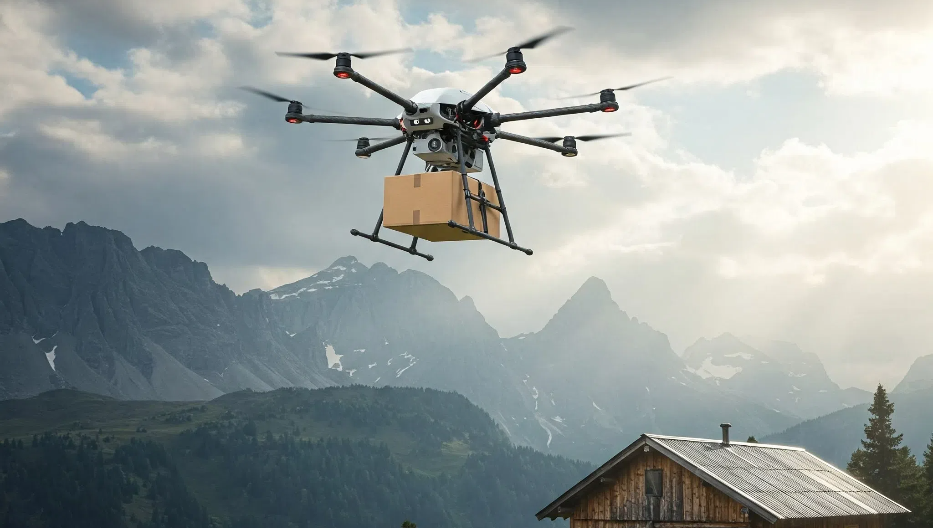
2. Core Challenges in Delivery Drone Deployment
2.1 Technical Limitations of Current Power Systems
Despite regulatory progress, four power-related constraints hinder scaling:
●Energy density limitations: Conventional LiPo batteries provide ≤250 Wh/kg, restricting drones to 25–40 km ranges with 2 kg payloads.
●Recharge latency: 1–2 hour charging cycles create fleet utilization ceilings below 50% in continuous operations.
●Thermal instability: Battery performance degrades by 35–40% at temperatures below 0°C or above 45°C, limiting operations in extreme climates.
●Cycle life bottlenecks: Standard 300–500 cycle lifespans necessitate frequent battery replacements, increasing TCO by 22%.
2.2 Operational and Infrastructural Barriers
Beyond technical factors, McKinsey identifies fleet management complexity, public acceptance hurdles, and heterogeneous regulatory regimes as adoption barriers. The Drone Delivery Group emphasizes the need for standardized safety protocols across air/land/sea domains to prevent midair collisions and cybersecurity breaches.
3. Core Application Scenarios of Delivery Drones
Delivery drones are not a one-size-fits-all solution. Their strengths are best leveraged in specific application scenarios where their unique capabilities provide significant advantages.
3.1 ThreeLevel Drone Delivery Network
A structured network—comprising trunk (long‑haul), branch (regional), and terminal (last‑mile) layers—maximizes efficiency:
●Trunk Distribution (Long-Range): Large, long-range Vertical Take-Off and Landing Fixed-Wing (VTOL) drones can be used for trunk distribution between major distribution centers or between cities. These drones can carry heavier payloads over longer distances, optimizing long-haul logistics.
●Branch Distribution (Medium-Range): Medium-sized multi-rotor or VTOL drones can handle branch distribution from regional hubs to local distribution centers or designated drone ports within a city. These drones need a balance of range, payload, and maneuverability. Reliable and quick-charging batteries are crucial for high-frequency operations within this segment.
●Terminal Distribution (Last-Mile): Small, agile multi-rotor drones are ideal for last-mile delivery directly to consumers' homes or designated delivery points. These drones prioritize maneuverability, safety in urban environments, and quick delivery times. Lightweight, safe, and efficient batteries are paramount for last-mile delivery drones.
3.2 Emergency Response Systems
Beyond commercial delivery, drones offer transformative capabilities in critical emergency scenarios:
●Medical Emergencies: Rapid delivery of vaccines, blood products, or medications can be lifesaving, especially in rural or disaster stricken areas.
●Disaster Response: In emergencies (e.g., earthquakes, floods), drones provide critical supplies when ground routes are compromised.
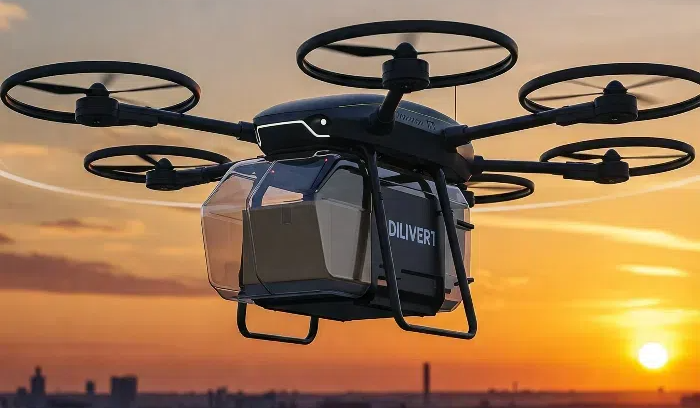
4. Applicable Types of Delivery Drones
The optimal type of delivery drone depends heavily on the specific application and operational requirements.
4.1 Small, Medium-sized, and Large Delivery Drones
●Small Delivery Drones: (Payload < 10kg, Range < 10km): Ideal for last-mile delivery of small packages, documents, and time-sensitive items in urban and suburban environments. Multi-rotor configurations are common due to maneuverability and vertical takeoff/landing capabilities.
●Medium-sized Delivery Drones: (Payload 10-50kg, Range 10-100km): Suitable for branch distribution, deliveries to more remote areas, and specialized applications like medical deliveries. Both multi-rotor and hybrid VTOL configurations are utilized, balancing payload, range, and efficiency.
●Large Delivery Drones: (Payload > 50kg, Range 100-300km): Designed for trunk distribution, heavier cargo transport, and potentially longer-range medical or disaster relief missions. VTOL fixed-wing configurations are favored for their efficiency and extended range capabilities.
| Drone Types | Small Delivery Drones | Medium-sized Delivery Drones | Large Delivery Drones |
| Payload | <10KG | 10-50KG | >50KG |
| Range | <10KM | 10-100KM | 100-300KM |
| Flight Time | <15Min | 15-60Min | >60Min |
| Applications | Terminal Distribution | Branch Distribution | Trunk Distribution |
| Functions | Solve the timeliness of the last mile delivery | Address the issues of fast and convenient small-batch transport within the city | Enable rapid transfer of regional logistics from warehouse to warehouse |
4.2 Flight Platform Types
VTOL (Vertical Take-Off and Landing) drones dominate urban delivery due to compact launch sites, while fixed-wing models excel in rural long-haul routes.
Multi-rotor Delivery Drones (e.g., Quadcopters, Hexacopters, Octocopters)
●Advantages: Excellent maneuverability, stable hovering, vertical takeoff and landing (VTOL), simpler mechanical design.
●Disadvantages: Limited range and endurance, lower energy efficiency, less efficient for long-distance flights, generally lower payload capacity for their size.
●Best Suited for: Last-mile delivery, short-range deliveries, applications requiring precise maneuvering and hovering.
Vertical Take-off and Landing Fixed-Wing (VTOL) Drones
●Advantages: Longer range and endurance, higher energy efficiency, higher speeds, capable of carrying larger payloads compared to multi-rotors of similar size for long-distance flights.
●Disadvantages: More complex mechanical design, requires more sophisticated flight control, less maneuverable than multi-rotors, may require specific takeoff/landing infrastructure (though VTOL minimizes this).
●Best Suited for: Trunk and branch distribution, medium to long-range deliveries, applications prioritizing range and payload capacity.
5. Grepow's Integrated Power Ecosystem
Grepow understands that the heart of any successful delivery drone is a reliable, high-performance power system. Our Delivery Drone Power Solution is specifically engineered to address the critical power challenges facing the industry, leveraging our expertise in advanced battery technology.
5.1 High Energy Density Semi-Solid State Batteries
Grepow's semi-solid state batteries are at the forefront of battery innovation, offering significant advantages over traditional lithium-ion batteries and directly addressing the pain points of delivery drone operations:
●Ultra-High Energy Density: Grepow's semi-solid state batteries (with densities ranging from 280Wh/kg to 350Wh/kg) extend flight times without increasing weight. This is pivotal for long-haul and high-payload drones.
●Enhanced Safety and Longevity: Featuring high-nickel NMC cathodes and silicon-carbon anodes, these batteries deliver over 1,200 cycles and maintain performance in extreme temperatures (–40°C to 60°C).
●Problem Solving: By overcoming limitations of conventional lithium-ion batteries, these semi-solid state cells directly address reduced endurance and weight issues that currently restrict delivery drone operations.
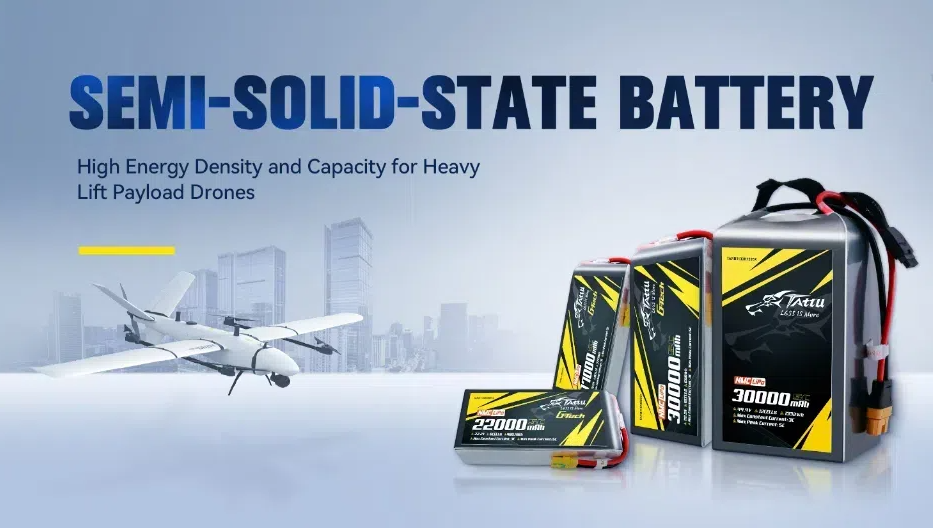
5.2 Adapted Fast-Charging Smart Chargers
To complement our high-performance batteries, Grepow offers a range of smart chargers (TA1000 and TA3200 series) specifically designed for delivery drone applications. These chargers feature:
●Rapid Charging Protocols: Optimized algorithms for fast and efficient charging of Grepow semi-solid batteries, minimizing downtime.
●Intelligent Charging Management: BMS integration, voltage and current monitoring, temperature control, and safety features ensure optimal charging performance and battery longevity.
●User-Friendly Interface: Intuitive displays and controls for easy operation and monitoring of charging progress.
●Robust and Reliable Design: Built to withstand demanding operational environments and ensure consistent performance.
5.3 BMS Intelligent Management Battery Research and Development
Grepow's Battery Management System (BMS) is a critical component of our Delivery Drone Power Solution. Our in-house R&D team focuses on developing advanced BMS technologies that provide:
●Precise State-of-Charge (SOC) and State-of-Health (SOH) Monitoring: Accurate real-time data on battery status for optimized flight management and preventative maintenance.
●Advanced Safety Algorithms: Protection against over-charge, over-discharge, over-current, short circuits, and thermal runaway, ensuring safe and reliable operation.
●Data Logging and Analytics: Comprehensive data recording for performance analysis, trend identification, and optimization of battery usage and lifespan.
●Customizable BMS Parameters: Tailored BMS settings to match specific drone configurations and operational requirements.
5.4 Battery Full-Process Customization Service
Recognizing the diverse needs of the delivery drone market, Grepow offers a full-process customization service, providing tailored battery solutions from concept to production:
●Application Analysis and Consulting: Our expert engineers work closely with clients to understand their specific drone application, operational parameters, and power requirements.
●Custom Battery Design and Engineering: Tailored battery pack design, cell selection, BMS integration, and mechanical packaging to meet precise performance and form factor needs.
●Rapid Prototyping and Testing: Fast turnaround on prototypes for performance validation and iterative design optimization.
●Flexible Manufacturing and Scalability: Adaptable manufacturing capabilities to support projects from small-scale prototypes to large-volume production.
●Quality Assurance and Reliability Testing: Rigorous testing procedures to ensure battery quality, safety, and performance meet the highest industry standards.
5.5 Exclusive Power Solutions Designed by Senior Engineers
●Expertise at Work: Grepow's team of senior engineers designs exclusive power systems that optimize energy output, weight distribution, and thermal management, ensuring that each solution not only meets but exceeds industry demands.
●Market Impact: These tailored solutions enable drones to perform reliably across various applications—from high-payload cargo deliveries to urgent medical supply drops—providing a competitive edge in the rapidly evolving market.
●Ongoing Technical Support: Dedicated support for battery maintenance, troubleshooting, and performance optimization throughout the operational lifecycle.
Conclusion
The delivery drone market is poised for explosive growth, driven by rising e-commerce demands, innovative technological advancements, and evolving regulatory frameworks. However, critical challenges—especially around battery life, payload capacity, and operational reliability—must be addressed to fully capitalize on the market potential. Grepow Delivery Drone Power Solution, with its advanced semi-solid battery technology, intelligent charging systems, and comprehensive customization services, is uniquely positioned to empower this revolution.
Grepow is committed to being the power behind the future of logistics. We invite you to partner with us to explore how our Delivery Drone Power Solution can propel your drone operations to new heights of performance, efficiency, and success.For further information, partnership inquiries, or to explore tailored battery solutions for your drone fleet, please contact Grepow at info@grepow.com.
Appendix: Grepow Semi-Solid State Battery Buying Guide for Different Payload Delivery Drones
●5KG Payload Delivery Drones Battery Buying Guide
| No. | Battery Model | Dimension T×W×L ±5mm) | Rated Voltage | Land-off Voltage | Weight (±200g) | Energy Density | Constant Discharge Current(3C) | Peak Current (10C≤15S) |
| 1. | Tattu 17Ah 6S | 55.5×71.5×187 | 22.2V | 18.6V | 1490g | 253.29Wh/kg | 51A | 170A |
| 2. | Tattu 22Ah 6S | 59.1×76.5×192 | 22.2V | 18.3V | 1736g | 281.34Wh/kg | 66A | 220A |
| 3. | Tattu 25Ah 6S | 51.9×91.5×207 | 22.2V | 18.3V | 1964g | 282.59Wh/kg | 75A | 250A |
| 4. | Tattu 33Ah 6S | 62.1×91.5×207 | 22.2V | 17.7V | 2324g | 315.23Wh/kg | 99A | 330A |
| 5. | Tattu 76Ah 6S | 61.5×151.5×287 | 22.2V | 17.7V | 5240g | 321.98Wh/kg | 228A | 760A |
| 6. | Tattu 80.4Ah 6S | 64.5×151.5×287 | 22.2V | 17.28V | 5242g | 340.50Wh/kg | 241.2A | 804A |
●10-20KG Payload Delivery Drones Battery Buying Guide
| No. | Battery Model | Dimension T×W×L ±5mm) | Rated Voltage | Land-off Voltage | Weight (±200g) | Energy Density | Constant Discharge Current(3C) | Peak Current (10C≤15S) |
| 1. | Tattu 17Ah 12S | 111.5×71.5×192 | 44.4V | 37.2V | 2898g | 260.47Wh/kg | 51A | 170A |
| 2. | Tattu 22Ah 12S | 118.7×76.5×197 | 44.4V | 36.6V | 3421g | 285.51Wh/kg | 66A | 220A |
| 3. | Tattu 25Ah 12S | 104.3×91.5×212 | 44.4V | 36.6V | 3906g | 284.15Wh/kg | 75A | 250A |
| 4. | Tattu 33Ah 12S | 124.7×91.5×212 | 44.4V | 35.4V | 4672g | 313.59Wh/kg | 99A | 330A |
| 5. | Tattu 76Ah 12S | 123.5×151.5×292 | 44.4V | 35.4V | 10877g | 310.24Wh/kg | 228A | 760A |
| 6. | Tattu 80.4Ah 12S | 128.5×151.5×292 | 44.4V | 34.56V | 10877g | 328.21Wh/kg | 241.2A | 804A |
●30-80KG Payload Delivery Drones Battery Buying Guide
| No. | Battery Model | Dimension T×W×L ±5mm) | Rated Voltage | Land-off Voltage | Weight (±200g) | Energy Density | Constant Discharge Current(3C) | Peak Current (10C≤15S) |
| 1. | Tattu 25Ah 14S | 121.1×91.5×212 | 51.8V | 42.7V | 4557g | 284.15Wh/kg | 75A | 250A |
| 2. | Tattu 33Ah 14S | 147.7×89.5×212 | 51.8V | 40.32V | 5183g | 329.81Wh/kg | 99A | 330A |
| 3. | Tattu 76Ah 14S | 143.5×151.5×292 | 51.8V | 41.3V | 12689g | 310.24Wh/kg | 228A | 760A |
| 4. | Tattu 84Ah 14S | 174.3×151.5×292 | 51.8V | 42.7V | 15489g | 280.92Wh/kg | 252A | 840A |
| 5. | Tattu 25Ah 18S | 185.3×76.5×197 | 66.6V | 53.1V | 5362g | 310.54Wh/kg | 75A | 250A |
| 6. | Tattu 30Ah 18S | 185.3×91.5×212 | 66.6V | 54.9V | 7009g | 285.08Wh/kg | 90A | 300A |
●100KG or More Payload Delivery Drones Battery Buying Guide
| No. | Battery Model | Dimension T×W×L ±5mm) | Rated Voltage | Land-off Voltage | Weight (±200g) | Energy Density | Constant Discharge Current(3C) | Peak Current (10C≤15S) |
| 1. | Tattu 33Ah 18S | 188.9×89.5×212 | 66.6V | 51.84V | 6664g | 329.81Wh/kg | 99A | 330A |
| 2. | Tattu 76Ah 18S | 183.5×151.5×292 | 66.6V | 53.1V | 16315g | 310.24Wh/kg | 228A | 760A |
| 3. | Tattu 80.4Ah 18S | 191.5×151.5×292 | 66.6V | 51.84V | 16315g | 328.21Wh/kg | 241.2A | 804A |
| 4. | Tattu 84Ah 18S | 223.1×151.5×292 | 66.6V | 54.9V | 19915g | 280.92Wh/kg | 252A | 840A |
| 5. | Tattu 30Ah 24S | 245.9×91.5×212 | 88.8V | 73.2V | 9345g | 285.00Wh/kg | 90A | 300A |
| 6. | Tattu 84Ah 24S | 296.3×151.5×292 | 88.8V | 73.2V | 26553g | 280.92Wh/kg | 252A | 840A |
Related Articles:
Some Common Sense about Delivery Drones
How to Choose Li-ion Battery for Spray Drone?
Introducing the Tattu 3.5 and 4.0 Battery Series: Powering Heavy-Lifting Drones
Firefighting Drones: Technology and Battery Power
Related Articles
-
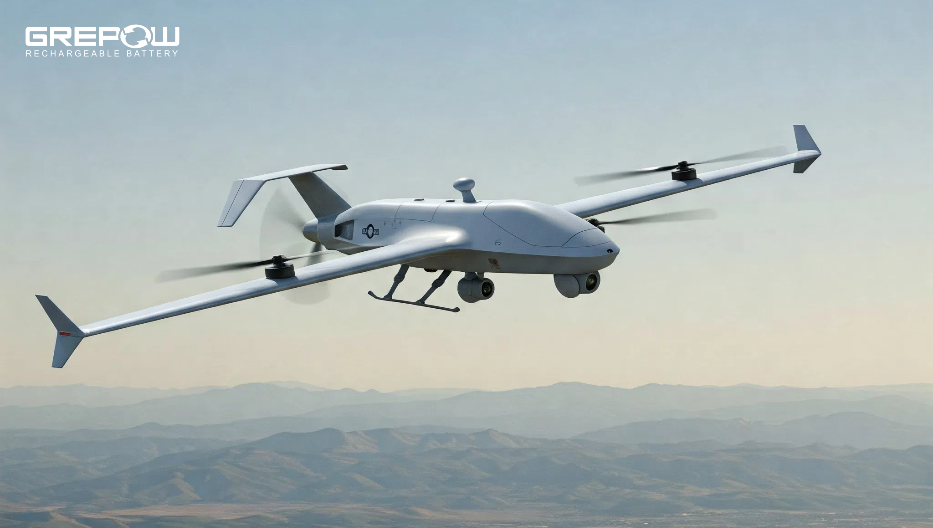
What Is a Long Endurance Drone?
2025-04-16 -
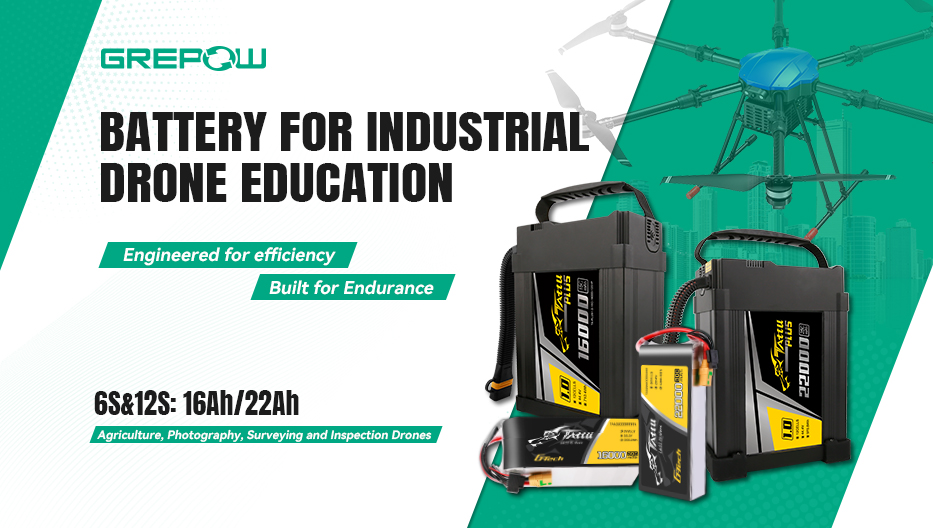
Empowering Drone Training with Grepow’s Tailored Battery Solutions
2025-04-15 -
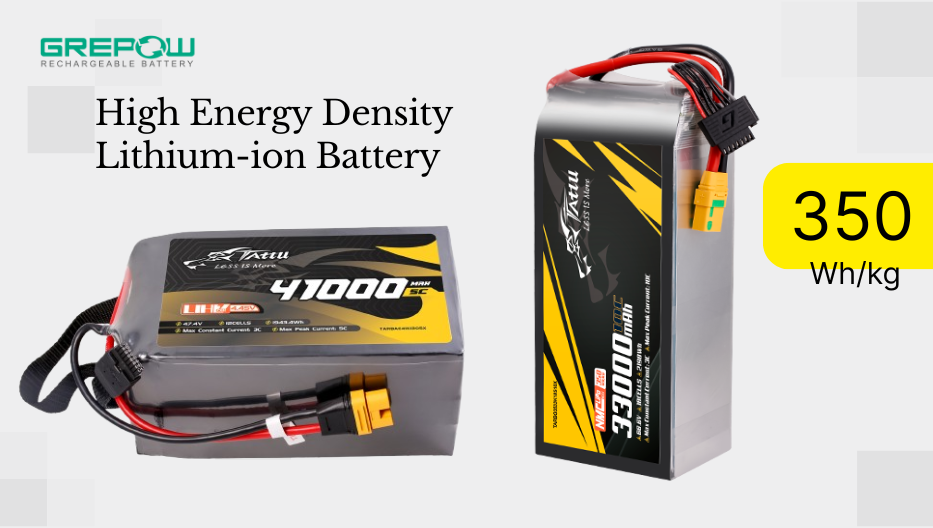
Four Specialized Lithium-Ion Battery Types Basis
2025-04-10
Related products
-
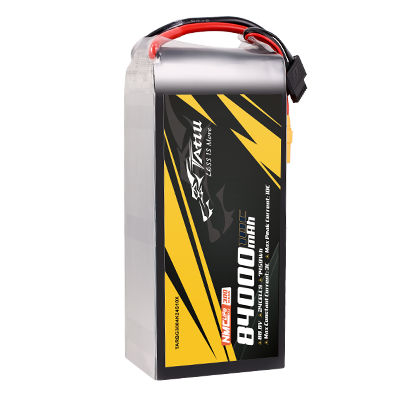
300Wh/kg Series Semi-Solid State High Energy Density Battery Pack
-
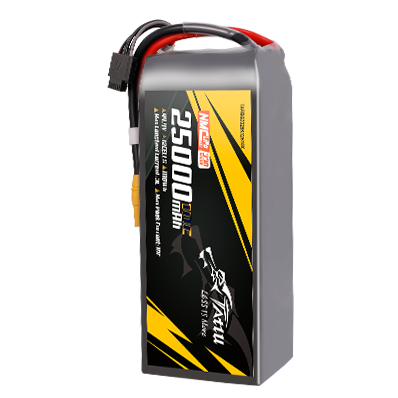
330Wh/kg Series Semi-Solid State High Energy Density Battery Pack
-
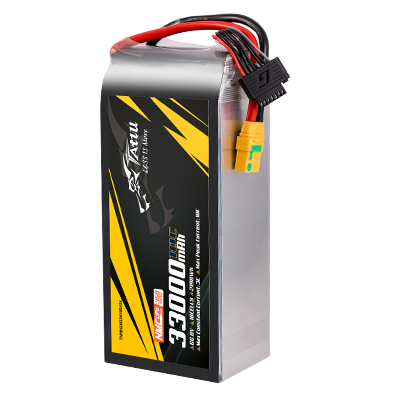
350Wh/kg Series Semi-Solid State High Energy Density Battery Pack

